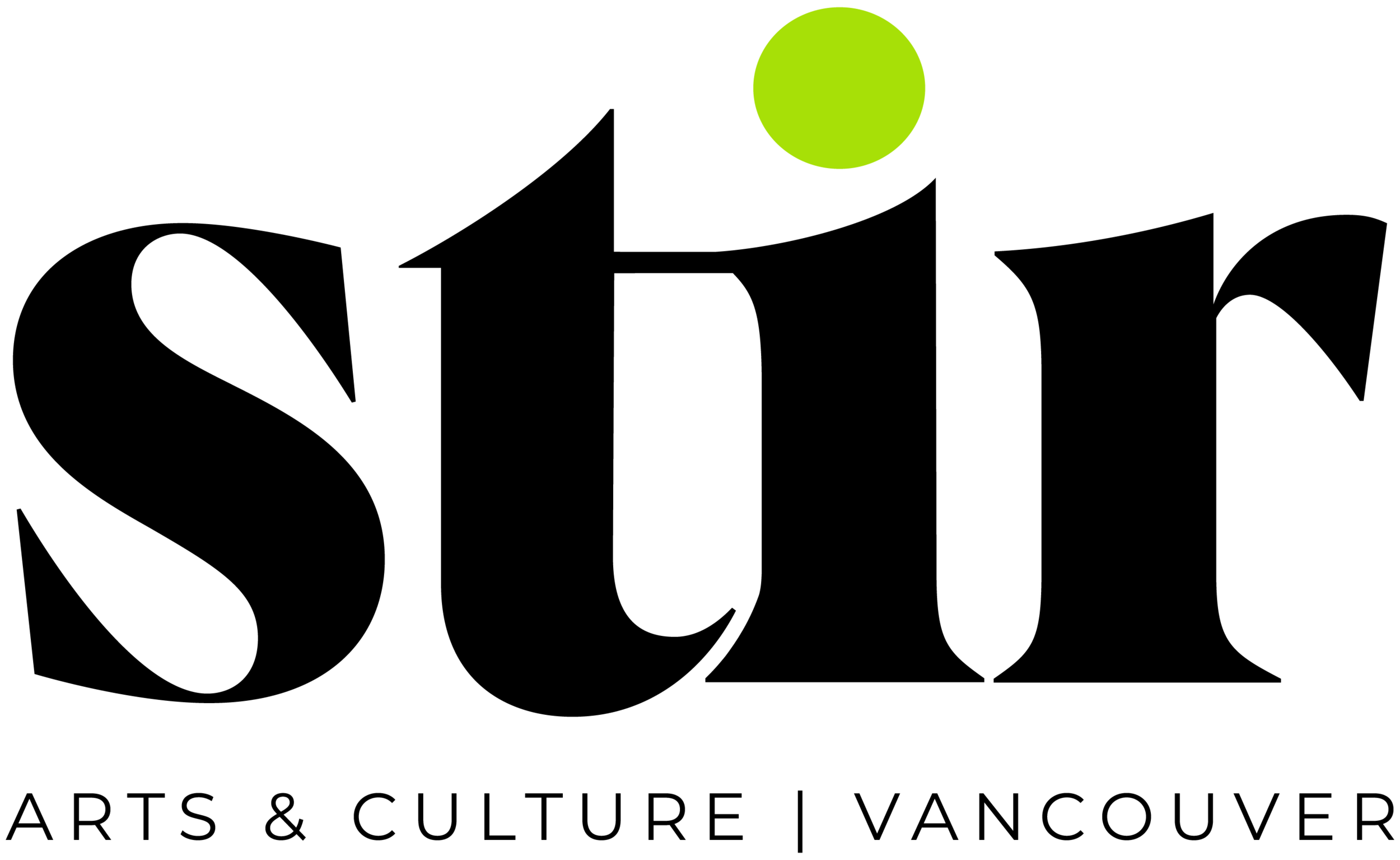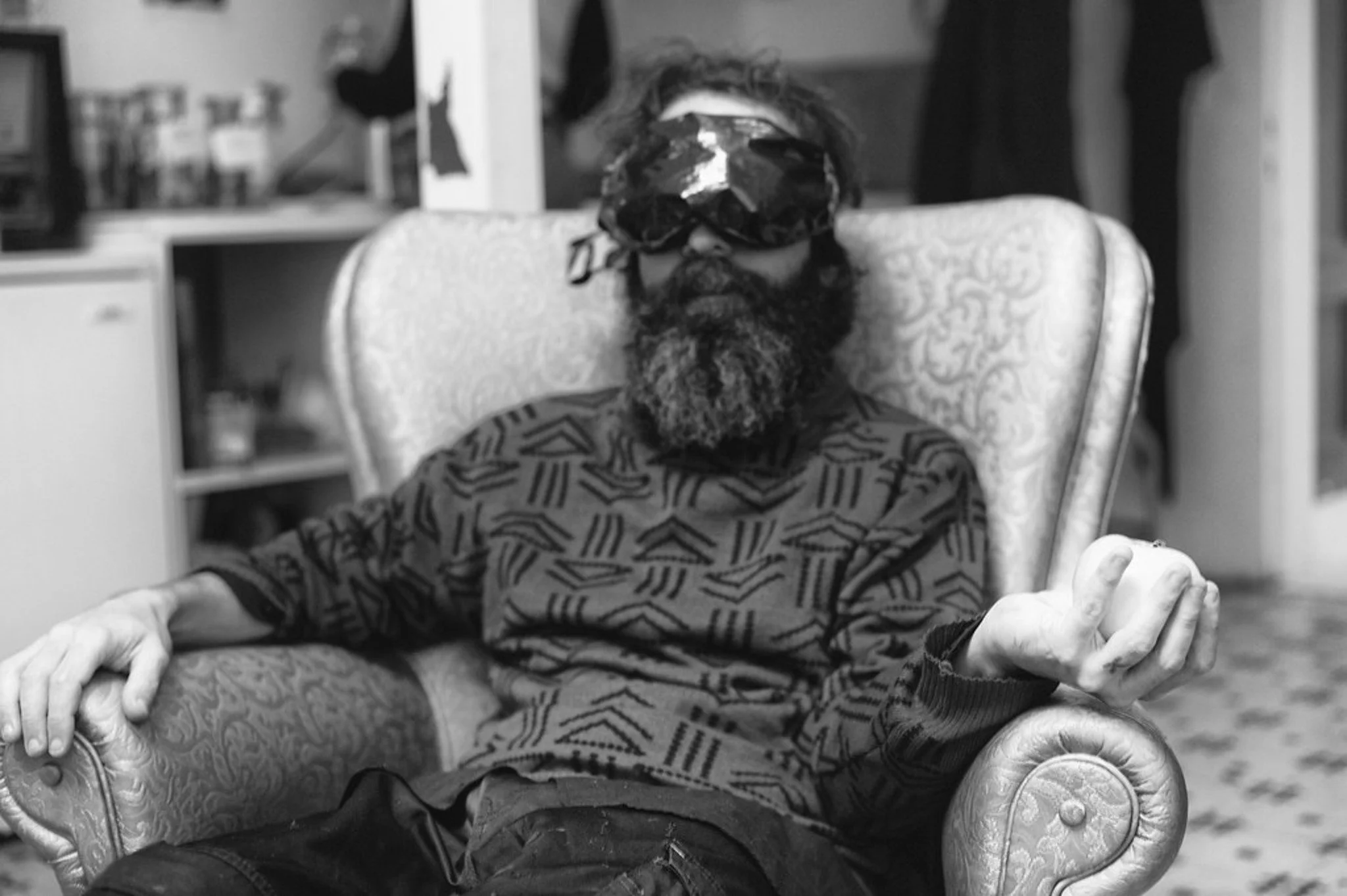At Vancouver New Music’s Parallel 07, Martin Howse uncovers the magic in hidden connections
Interdisciplinary artist melds software with sound performance in experimental workshop and presentation
Installation performance by Martin Howse. Photo by Anna Baštýřová
Vancouver New Music presents Parallel 07: Martin Howse at the Annex on March 15 at 8 pm
IN THE INTERDISCIPLINARY world of U.K.–born artist Martin Howse, a shared space can become a stage, a laboratory, and a ceremonial place all at once. Howse has built an artistic career that blends his passion for software, the human psyche, and the Earth. Rather than focusing on a single area, he combines elements of all three to facilitate community experiences and explore timely issues.
This month, Howse is leading the seventh installment of Vancouver New Music’s popular Parallels series, which brings renowned international artists together with local talents to create site- and time-specific works. This begins with a three-day workshop starting March 12, where participants will create “hybrid instruments” by exposing speech and vocalizations to experimental processes. Howse, along with workshop participants, will then use the research and instruments developed in the workshop in a public-presentation performance at the Annex on March 15.
For some, such an open-ended premise is entirely foreign—but for Howse, combining artistic performance with scientific experimentation is a lifelong practice.
“This kind of workshop practice is something I’ve been doing for maybe 15 or 16 years,” Howse explains over a Zoom call from his home base in Berlin. “I am happier if people come as they are and discover as we go along, rather than having too much preconception of what direction we might go in. I can also do this on my own, but exploring this with groups of people, making interventions and performances within forests or mining sites, it made sense to have this workshop element. Particularly in the case of this workshop and presentation performance, I am very interested to see what people bring to it that I am not aware of beforehand.”
Martin Howse. Photo by Nik Gaffney
Howse’s body of work includes many strands and intersections, but his preoccupation with technology and the Earth can be traced back to formative childhood experiences, surrounded by DIY technology.
“I was exposed to electronics when I was five or six, working with early 1970s technology that was very clunky and primitive, falling apart and needing to be fixed,” he describes. “I was always aware of how you could fix these things in quite haphazard or makeshift ways using basic materials. Somehow, it informed this very material obsession with technology.”
Howse’s artistic interests took him to Goldsmiths College in London, where he studied fine arts, working primarily with film and photography. Incorporating the skills instilled in his childhood came naturally once he found like-minded communities and hidden gems left behind by technological progress.
“A few years after I left art school, I became friends with people who were running kind of an early computer network,” Howse says. “They would point out to me where I can find old computers on the street, particularly in the financial district close to where I was in East London. I’d use them to make performances in the early days, with sound and video processing and piles of old computers networked together. [It was] very raw, like trying to show the source code of what they were doing, and they would kind of break down during the performances.”
By bringing his unique deconstructive lens to his projects and workshops, a poem can be transmuted into light, the voice into an electronic instrument, each uncovering a hidden connection between different languages, structures, and computations.
“I’m always trying to find ways to bridge those domains,” Howse says. “Samuel Beckett writes a lot about how you can use language to undermine language and show its cracks and fissures. This is something which is also in my work, that there is something geologic within human thought and within language.”
As a byproduct of programming language, and despite its underpinnings across his work, Howse speaks on software as an illusory component of contemporary living, where the complexity of code is often concealed rather than explored.
“Software is something I work with on a daily basis and I absolutely love it,” he explains. “For me, the danger is in this proliferation of something which is always hidden. For me, code and software are something magical, but there is also hiding it and saying, ‘That is just magic,’ you know?”
In this vein, Howse’s collaborative effort with workshop participants aims to expand and uncover new connections between these foundational elements, and will serve as an extension of his live-performance project, Tract. By excavating the hidden aspects of software and its impact on the Earth, Howse hopes to address the growing disconnection between people, technology, and the environment.
“I don’t know if there could be a movement to return to primitive computing, but I think this could be important for people to engage with,” Howse posits. “I think what is important is not to try and replicate structures we already have, but to imagine new structures through those activities. If it is an activity which is joyful and interesting to do, the materials of computation and technology could become fascinating again. This merges in a way with geophysics—how we can interface with the geologic, how it comes through us, is kind of essential. We’re changing the Earth through our actions, but the Earth is also changing us.” ![]()

























